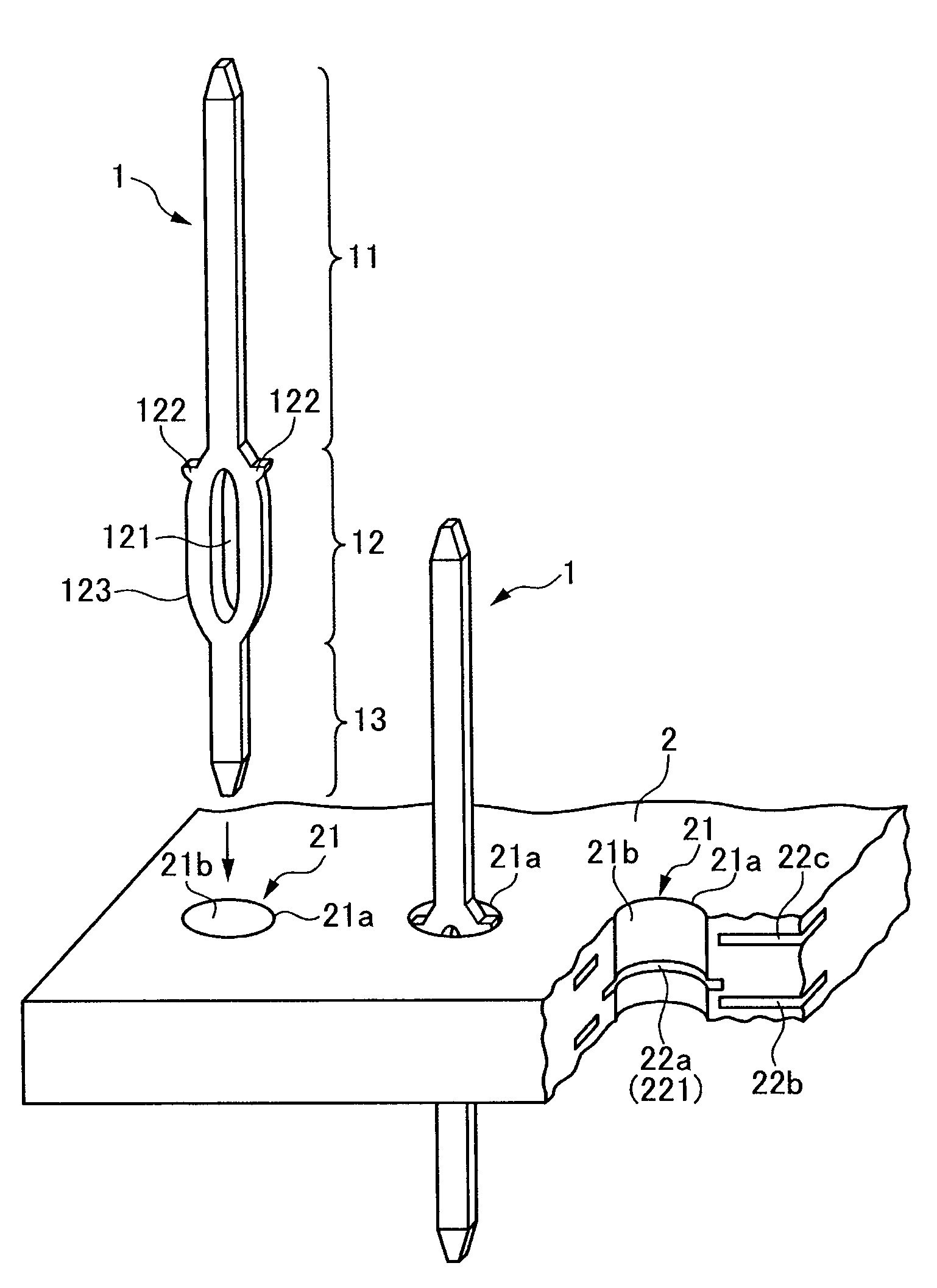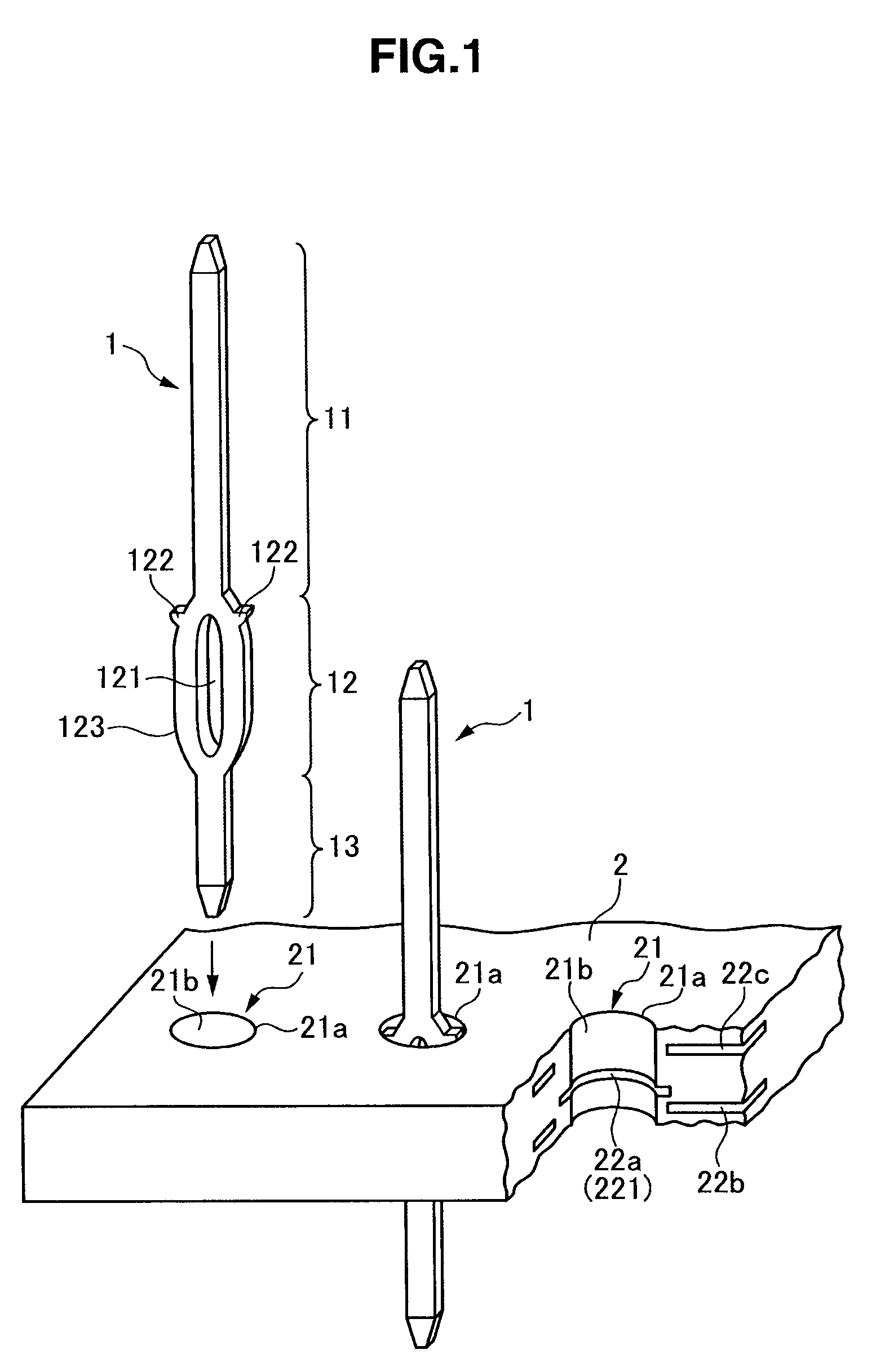Press-fit pin and board structure
a press-fit pin and board technology, applied in the direction of printed circuits, electrical devices, printed circuit aspects, etc., can solve the problems of increasing the demand for downsizing boards, transmission losses, and mismatching of impedances, so as to suppress the electrically-static capacitance of through-holes, reduce the number of wiring layers, and reduce the effect of downsizing boards
- Summary
- Abstract
- Description
- Claims
- Application Information
AI Technical Summary
Benefits of technology
Problems solved by technology
Method used
Image
Examples
Embodiment Construction
[0030]An embodiment of this invention will be described with reference to the attached drawings.
[0031]FIG. 1 is a partial perspective view showing press-fit pins 1 and a printed wiring board 2 according to an embodiment of the invention.
[0032]Referring to FIG. 1, press-fit pins 1 are press-fitted into through-holes 21 through opening portions 21a, which are formed in the printed wiring board 2, to be fixed to the printed wiring board 2. Each press-fit pin 1 fixed to the print wiring board 2 mechanically retains a housing of a plug connector 3 to serve as a terminal 31 of the plug connector 3 (see FIG. 2). The plug connector 3 is fitted with another connector (receptacle connector) 4, thereby allowing the terminal 31 and a terminal 41 of the respective connectors to be electrically connected with each other.
[0033]FIG. 3 is a diagram illustrating a product example using the printed wiring board 2 configured to include the press-fit pins 1 according to an embodiment of the invention. T...
PUM
 Login to View More
Login to View More Abstract
Description
Claims
Application Information
 Login to View More
Login to View More - R&D
- Intellectual Property
- Life Sciences
- Materials
- Tech Scout
- Unparalleled Data Quality
- Higher Quality Content
- 60% Fewer Hallucinations
Browse by: Latest US Patents, China's latest patents, Technical Efficacy Thesaurus, Application Domain, Technology Topic, Popular Technical Reports.
© 2025 PatSnap. All rights reserved.Legal|Privacy policy|Modern Slavery Act Transparency Statement|Sitemap|About US| Contact US: help@patsnap.com



